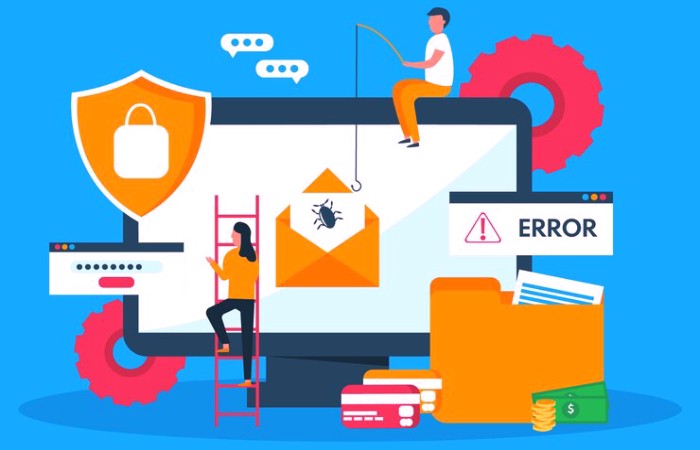Check DMARC Record For Better Email
Deliverability And Cybersecurity Protection
Deliverability And Cybersecurity Protection
In the current digital environment, safeguarding email is vital for organizations to defend against cyber threats like phishing, spoofing, and email fraud. A highly effective method for securing your email communications is through the implementation and proper setup of DMARC (Domain-based Message Authentication, Reporting & Conformance).
When DMARC is configured accurately, it improves email deliverability, ensures adherence to authentication standards (SPF and DKIM), and offers important insights into any unauthorized email actions. This guide will delve into how to verify your DMARC record, understand the reports, and fine-tune settings for optimal security and performance
Understanding DMARC and Its Importance
DMARC is a protocol designed to authenticate emails and protect against domain spoofing and phishing threats. It enhances the security provided by SPF (Sender Policy Framework) and DKIM (DomainKeys Identified Mail) to verify the legitimacy of emails originating from a specific domain. Additionally, DMARC enables domain owners to dictate the actions that receiving mail servers should take when they encounter emails that are not authenticated.

Key Benefits of DMARC
- Enhanced Email Delivery: DMARC guarantees that genuine emails successfully arrive in recipients' inboxes, minimizing the risk of them being flagged as spam.
- Defense Against Phishing and Spoofing: This protocol stops cybercriminals from pretending to be your domain to distribute deceptive emails.
- Strengthened Brand Integrity and Trust: A domain secured with DMARC conveys a sense of trustworthiness and safety to both recipients and email service providers.
- Increased Awareness and Oversight: DMARC includes reporting tools that offer valuable information regarding email authentication issues and potential threats.
How to Check Your DMARC Record
To ensure that your DMARC policy is properly configured and operating as expected, it's essential to examine your DMARC record. Here’s the process:
1. Use Online DMARC Record Checkers
You can utilize various complimentary web-based tools to verify DMARC records, including:
- MXToolBox
- DMARC Analyzer
- Google Admin Toolbox
- EasyDMARC
Just input your domain name, and these resources will assess your DMARC record and generate a comprehensive report.
2. Check DMARC Record Using Command Line
If you are familiar with using the command line, you can manually verify a DMARC record by executing a DNS lookup command. For this, enter the following in your terminal:
nsh dig _dmarc.example.com TXT
For users on Windows, the equivalent command is:
nslookup -type=TXT _dmarc.example.com
Make sure to substitute example.com with your real domain name. The result will show your DMARC record.
3. Interpret DMARC Record Results
A typical DMARC record appears as follows:
_v=DMARC1; p=reject; rua=mailto:dmarc-reports@example.com;
ruf=mailto:forensic-reports@example.com; fo=1;
Essential elements of a DMARC record include:
- v=DMARC1: Indicates the version of the DMARC protocol.
- p=reject: Specifies the policy for DMARC (options include none, quarantine, or reject).
- rua=mailto:: Contact email for receiving aggregate reports.
- ruf=mailto:: Contact email for receiving forensic reports.
- fo=1: Option for reporting failures.

Best Practices for DMARC Implementation
1. Start with a "None" Policy
At the initial stage of DMARC implementation, set the policy to p=none. This approach enables you to observe email traffic without disrupting delivery. It provides an opportunity to collect information on authentication issues before applying more stringent rules.
2. Gradually Move to "Quarantine" and "Reject"
After reviewing DMARC reports and confirming valid email sources, implement a more stringent policy:
- p=quarantine: Diverts potentially suspicious emails to the spam folder.
- p=reject: Completely prevents unauthorized emails from being delivered.
3. Align SPF and DKIM
To ensure DMARC operates effectively, SPF and DKIM records must be correctly aligned. Emails should successfully authenticate through at least one of these mechanisms.
4. Regularly Monitor DMARC Reports
DMARC reports play a crucial role in identifying unauthorized email activities and enhancing overall email security. Consider utilizing tools such as DMARC Analyzer to streamline the reporting and analysis process.
Ensure that your SPF, DKIM, and DMARC records are regularly updated. Modifications in email service providers or third-party services might necessitate updates to preserve the effectiveness of your authentication measures. Head over to this page for more information.